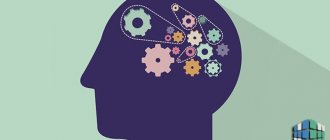In the development of addictive behavior, several natural stages can be distinguished. Every addict goes through these stages. Some who start drug, alcohol or other addiction treatment on time may not reach the final stage. However, denial of chemical dependence leads to the fact that almost 90% of people reach the final stage of addictive behavior, degradation and death.
What is addictive behavior in adolescents
Addictive behavior of adolescents or in other words “habit”, “addiction” is a dependence that can form from various objects - psychotropic substances, alcohol, slot machines, smoking and much more, which negatively affects the physical and mental state of a growing organism.
Teenagers are more susceptible to addiction than others, because their psyche is not fully formed, there are hormonal changes in the body, and they begin to adapt to adult life.
Their psyche is not yet fully formed, hormonal changes occur in the body, the individual learns to recognize himself as part of society, communicate, and adapts to adult life. We can talk about addictive behavior when a child begins to withdraw from reality with the help of various prohibited substances. Initially, it is a simple interest, but after the first use, an attachment arises, which is impossible to cope with without the help of professional narcologists and psychotherapists.
Second stage of addictive behavior
At the next stage, as a result of repeated implementation of addictive behavior, the addict develops a desire and desire to resort to means of addiction.
The more difficulties a person encounters in life, the less support he finds in his environment, the faster a stereotype of addictive behavior will develop. All aspects of life cease to interest the addict: communication, family, work fade into the background.
Even the most insignificant problems and experiences that cause mental discomfort, anxiety, and restlessness begin to provoke addiction.
Forms of addiction
Addictive teenagers most often succumb to two main types of addiction:
- Chemical - pathological addiction can manifest itself from alcohol, drugs, various inhaled or smoking mixtures, as well as medications, glue.
- Emotional – any activity that destroys the individual’s psyche. It could be gambling addiction, addiction to social networks, computer addiction. This category includes addictive sexual behavior, overeating, participation in sects, which negatively affect the psycho-emotional state.
If you do not pay attention to the problem, any of the addictions can have disastrous consequences, lead to crime, cause suicide attempts, and provoke a number of neurological and mental diseases.
Main Factors
The cause of addiction can be various factors, but it mainly affects children from disadvantaged families, those who are exposed to violence or do not feel supported by their parents. At risk are those children who take everything around them too close to their hearts, from an early age experience fear of their parents, suffer from increased intracranial pressure, are hyperexcitable and unstable. If parents notice a predisposition to addiction, prevention of addictive behavior should be carried out from an early age. It consists of attention to the child, participation in his life and interests. When a child feels the support and love of his parents, the risks of addiction are minimal.
The fourth stage of addictive behavior
The fourth stage is associated with complete dominance in the life of an addict of addictive behavior . The entire life of an addicted person is built around the addictive process, into which he is completely immersed. There is a complete alienation from society and people. The inner world of a dependent person is destroyed. Addictive fulfillment ceases to bring the same pleasure. Contacts with people are completely destroyed. People around them consider addicts to be “complete” people.
How is the treatment carried out?
It is unlikely that you will be able to cope with the problem on your own; here you need the help of highly qualified psychotherapists, as well as the desire of the youngest addict. Working with a psychologist and parental attention will help motivate you to undergo treatment. The individual must realize that the use of prohibited substances or excessive passion for any activity will not bring results, but only worsens and destroys his life.
If the addiction is advanced, there is a pronounced dependence, treatment should be carried out in a hospital setting. Therapy will include taking medications that relieve intoxication of the body, medications to restore the functioning of organs and systems. A psychologist will work with the addict in parallel.
Particular attention is paid to rehabilitation, where difficult teenagers undergo rehabilitation courses, take part in group and individual classes, and undergo cognitive-behavioral moderation. Thanks to an integrated approach to solving the problem, the addict learns to take responsibility, solve problems, gets rid of aggression, and improves relationships with parents.
By contacting the Neuroreconstruction Center, solving the problem will not be difficult. We take on the most difficult cases, provide comprehensive treatment for all types of addictions, and specialize in the treatment of neurological and mental diseases.
Addiction in teenagers is one of the common problems that many families face. The main tool should be the prevention of addictive behavior of adolescents in the family. Only attention and care, trusting relationships with adults, and participation in the child’s life will help minimize risks.
Article: Addictive behavior in adolescence.
Addictive behavior in adolescence.
Stanchenko Elena Nikolaevna, teacher
Municipal educational institution secondary school No. 16 village. Khani Republic of Sakha (Yakutia).
I.Introduction .
In adolescence, what is particularly relevant is not early formed alcoholism, not drug addiction and substance abuse, but the abuse of alcohol, drugs and other toxic substances, when there is no dependence on them yet.
In recent years, this has been called “ addictive behavior.
" This term is gradually finding more and more recognition in both drug treatment and psychological literature. Its advantage is that it well reflects the trait sometimes called “primary,” “initial,” “searching” adolescent polydrug use. The essence of this trait is that many teenagers are inclined to try on themselves the effects of a variety of drugs: from alcohol and inhalants to smoking hashish and taking hallucinogens.
It is known that if addictive behavior begins in adolescence, then the risk of developing alcoholism, drug addiction and substance abuse is high. Among patients with alcoholism, 76% begin drinking before the age of 20, including 49% while still in adolescence. The adverse effects of toxic substances especially affect development when their abuse begins in early and middle adolescence - up to 16 years.
Addictive behavior, that is, abuse without dependence, is very difficult to treat and correct. As a rule, they must be accompanied by comprehensive measures of prevention, social support and rehabilitation. It is most productive to implement these measures in early and middle adolescence (10 - 14 years). Lectures, conversations, brochures are unattractive for teenagers, and the inclusion of compulsory classes in the curriculum can provoke a reaction of protest and thereby devalue the knowledge being presented. Since at this age adults lose their influence on the child, and communication with peers becomes increasingly important, the main emphasis in the prevention of addictive behavior should be placed on working with the group. Group training is one of the most effective forms of preventive work with adolescents prone to addictive behavior.
Preventive work should be based on studying the motivation of addictive behavior, as well as the causes and factors contributing to this. Without knowing this, prevention methods may not be effective.
II.ADDICTIVE BEHAVIOR IN ADOLESCENCE. REASONS AND FACTORS CONTRIBUTING TO ITS DEVELOPMENT
Addiction
- in English, an addiction, an addiction to something, a vicious inclination. This term began to refer to the abuse of various substances that change the mental state before physical dependence has formed on them.
Addictive behavior of adolescents
- this is a type of deviant self-destructive behavior associated with a state of altered consciousness, a deformed form of satisfying needs through psychoactive substances, this is a type of adaptation disorder in adolescence, which is characterized by the abuse of one or more psychoactive substances without signs of individual mental or physical dependence in combination with other disorders behavior.
For teenagers, the term " addictive behavior"
"perhaps the most adequate. It is hardly appropriate to call cases of drug abuse when they abuse other substances rather than drugs. In addition, due to its consonance with alcoholism, morphism, etc., this term may suggest an established dependence. However, it must be taken into account that the line between addictive behavior and drug addiction as a disease is very fragile.
Addictive behavior, as well as drug addiction as a disease, is very difficult to correct and treat. As a rule, they must be accompanied by comprehensive measures of social support and rehabilitation. Therefore, it is more productive to carry out prevention and implement nationwide preventive measures of various types.
Addictive behavior in adolescence can be caused by the following reasons:
1) Social and pedagogical neglect, when a teenager behaves incorrectly due to his bad manners, lack of the necessary positive knowledge, abilities, skills, or due to depravity due to improper upbringing, the formation of negative behavioral stereotypes in him.
2) Deep mental discomfort caused by dysfunctional family relationships, a negative psychological microclimate in the family, systematic academic failures, poor relationships with peers in the class, incorrect (unfair, rude, cruel) attitude towards him on the part of parents, teachers, classmates and etc.
3) Deviations in the state of mental and physical health and development, age-related crises, accentuations of character and other reasons of physiological and psychoneurological properties.
4) Lack of conditions for self-expression, reasonable manifestation of external and internal activity; lack of employment in useful activities, lack of positive and meaningful social and personal life goals and plans.
5) Neglect, negative environmental influences and developing on this basis social and psychological disadaptation, a shift in social and personal values from positive to negative.
A special role in this chain of causes is played by the social and pedagogical neglect of adolescents, which develops against the background of the indifferent, inattentive attitude of those around them. As a result, feelings of loneliness, abandonment, uselessness, and insecurity arise. Feelings of protest, alienation, hostility towards adults, a desire for unification, cooperation, self-organization on the basis of like-mindedness, common fate, interests and inclinations arise.
The lack of positive social experience, underdeveloped and unformed worldview, system of value orientations, ethical norms and aesthetic tastes contribute to the choice of adolescents in negative, illegal areas of application of their activity, which inevitably affects their behavior, the formation of personality, and asocial appearance. A significant role in this process is played by the lack of timely, necessary pedagogical, psychological, social and medical assistance.
In order for work with addictive adolescents to be successful, it is also necessary to identify and take into account the factors that give rise to various forms of deviations. The following factors are distinguished:
1. Processes taking place in society:
— lack of a clear positive state ideology aimed at changing the hierarchy of public values;
— imperfection of laws and the work of law enforcement agencies, impunity for crimes;
-unemployment (explicit and hidden);
— lack of social guarantees and state support for economically insolvent families with children;
- destruction and crisis of traditional institutions of socialization of the younger generation (children's and youth organizations, families, schools);
— advertising and availability of psychoactive substances.
2. The state of the family, its atmosphere:
- single-parent family;
- financial situation of the family (both poverty and wealth);
- low socio-cultural level of parents;
- lack of family traditions;
- style of upbringing in the family (lack of uniform requirements for the child, cruelty of parents, neglect of children and lack of rights for the child);
- denial of the child’s self-worth;
— meeting the needs of children (their lack and excess);
- abuse of alcohol, drugs or other psychoactive substances by parents and other relatives;
- parents' permissive attitude towards their children's use of drugs.
3. Risk factors coming from the organization within school life:
— imperfect organization of management of the processes of education and upbringing (poor material security of the school, lack of systematic communication between the school and the students’ families and leverage on parents who are not involved in raising the child, unsatisfactory organization of extracurricular activities, lack of children’s organizations in the school.
- professional failure of some teachers, expressed in ignorance of child and developmental psychology.
The listed risk factors are external
,
objective nature.
However, in addition to these influences, the adolescent is influenced by
internal
risk factors. These include: a feeling of insignificance and uselessness, low self-esteem, self-doubt, insufficient self-control and self-discipline, ignorance or rejection of social norms and values, inability to think critically and make adequate decisions in various situations, inability to express one’s feelings and respond correctly to one’s behavior and behavior of other people.
In adolescence, during puberty, behavior is largely determined by the reactions of emancipation, grouping with peers, interests (hobbies) and emerging sexual desire characteristic of this period of life. Such reactions may be factors contributing to the abuse of alcohol, drugs and other toxic substances.
Emancipation reaction
is manifested by the desire to free oneself from the tutelage, control, leadership, patronage of relatives, educators, teachers, all elders in general, from the orders, rules, laws established by them, from everything that is respected and valued by adults. This reaction can be directed at the immediate environment, directly at guardians and mentors, but can also extend to the entire older generation as a whole. In the latter case, when the emancipation reaction is consolidated with the reaction of grouping with peers, behavior can become antisocial, reaching the level of youth rebellion.
An aggravated manifestation of the emancipation reaction is a special form of behavior called “freedom poisoning.” A similar symptom complex develops when a teenager’s strictly regulated life routine is immediately replaced by complete freedom, and constant care in everyday life is replaced by independence. The sudden disappearance of inhibitions in itself can be a strong emotional stress for a teenager.
With “freedom poisoning,” the teenager becomes the opposite of what was required of him before. It is precisely what was not allowed before that attracts. Drinking, drug use and other intoxicating drugs are caused by the desire to “taste previously forbidden fruits.” “Poisoned by Freedom” is especially conducive to primary exploratory drug addiction, that is, the desire to try everything, to experience the effects of all the intoxicating drugs that one can get hold of.
The manifestations of the emancipation reaction are very diverse. It can be felt in the everyday behavior of a teenager, in the desire to always and everywhere act “in his own way”, “independently”. In hyperthymic adolescents, the emancipation reaction is most manifested in actions, in hysterical and schizoid adolescents - in statements.
Hobby reaction
On the contrary, as a rule, it is a powerful factor counteracting addictive behavior. Longitudinal studies have shown that the emergence of persistent hobbies contributed to a sharp decline in drinking during late adolescence and post-adolescence. Intellectual and aesthetic hobbies according to A.E.’s classification turn out to be a particularly counteracting factor. However, among adolescents of the hysterical type of accentuation, who are fond of poetry or drawing, smoking hashish is sometimes used as a method supposedly stimulating creative abilities. But their hobbies are more likely to be egocentric, fueled by the desire to attract attention to themselves, to show others their extraordinary abilities. Teenagers of the schizoid type, who are interested in Eastern philosophy and religion, can abuse the same hashish in order to penetrate into the hidden meaning of these teachings.
Physical-manual hobbies, that is, the desire to develop strength, dexterity, certain skills, and achieve perfection in any skills, usually prevent addictive behavior. However, these same hobbies can lead to the abuse of doping drugs in the form of anabolic steroids to develop muscles, or stimulants to achieve any achievements. Sensitive young men are especially prone to such hobbies, for whom these hobbies are closely intertwined with the reaction of overcompensation.
All other types of hobbies can be a barrier to addictive behavior.
The exception is a special type of hobby called A.E. Personally “informational and communicative.” Such teenagers spend all their time mindlessly communicating with peers, absorbing and exchanging information that is of little significance and does not require any intellectual processing. This results in a constant attraction to asocial companies of peers. This behavior is easily combined with alcohol abuse and exposure to various toxic substances. However, the main motivating factor and contributing factor to addictive behavior is not the thirst for new information itself, but the influence of asocial companies where it is exchanged. In these companies, people are introduced to alcohol and other intoxicating drugs.
Usually, if a teenager himself declares that he has no hobbies, we are actually talking about such an informational and communicative hobby. This type of hobby is most characteristic of unstable and conformist teenagers.
Reactions caused by emerging sexual attraction
to a certain extent can influence the choice of toxic substances and even contribute to their abuse. Some of the inhalants, especially those containing ether and sometimes gasoline, promote the visualization of ideas (“what I want, I will see”), including sexual content. Such visualized sexual representations are accompanied by sexual arousal, up to orgasm. In teenage slang, this is sometimes referred to as “watching a striptease.” Such sexual motivation for inhalant abuse is typical of young and middle-aged adolescents. There is a belief among teenagers that smoking hashish increases sexual potency or makes sexual experiences during intercourse especially intense and attractive. But rather, we are not talking about increasing sexual potency, but about sexual disinhibition - the elimination of social and psychological inhibitors. This is especially true in female adolescents who are seduced by older sexual partners.
From the very beginning of the emergence of the teenage epidemic of drug addiction in Western countries and their appearance in our country, it became obvious that the introduction of adolescents to drugs and other psychoactive substances, even more than before to alcohol, occurs in the company of peers, that is, it is closely related to the reaction of grouping with them . In this regard, sociopsychological studies of various adolescent groups were undertaken in order to determine their significance in the development of addictive behavior.
Peer grouping response.
There are two types of teenage groups. Some are distinguished by their same-sex composition, the presence of a permanent leader, a rather rigidly fixed role for each member, and his firm place on the hierarchical ladder of intra-group relationships (subordination by some, pushing around by others). In these groups there are such roles as “adjutant of the leader” - usually a physically strong teenager with low intelligence, with whose fists the leader holds the group in obedience, there is an “anti-leader” who strives to take the place of leader, there is a “six” who is pushed around by everyone. Often such a group has “its own territory”, carefully protected from the invasion of peers from other groups, in the struggle with which life mainly takes place.
Another type of teenage groups is characterized by an unclear distribution of roles and the absence of a permanent leader - his function is performed by different members of the group, depending on what the group is currently doing.
Apparently, there are intermediate and other types of teenage groups.
The grouping reaction can be used to describe the well-known fact that the vast majority of offenses among adolescents are committed in a group. In the peer group, as a rule, alcoholism also begins, and the first acquaintance with the effects of other toxic substances takes place. Even the formation of mental dependence on alcohol or other toxic substances goes through a stage of a special “group dependence” - when, for example, the attraction to alcohol flares up only when a teenager finds himself in “his” group.
III . Types of character accentuations as factors influencing addictive behavior
Character accentuations and psychopathy can act as factors influencing addictive behavior. Each type of character accentuation and psychopathy in adolescence turned out to have certain differences in addictive behavior Lichko A.E.
Hyperthymic teenagers
are characterized by weak resistance to the influence of companies regarding the temptation to abuse alcohol, drugs and other intoxicating substances.
The main distinguishing feature of adolescents of the hyperthymic type is the possibility of long-term abuse without the development of addiction. This applies to both alcohol and other intoxicating drugs. It is possible that the high biological tone inherent in hyperthymics, the constant desire for activity, keen interest in everything that happens around, the presence of tempting plans for the future prevent the rapid development of individual mental dependence (group dependence can arise quite easily).
Cycloid teenagers
in the hyperthymic phase they behave accordingly in relation to both alcohol and other intoxications. But when such a phase ends, the abuse usually stops. Alcohol intoxication can even worsen depression. Stimulants can cause inner restlessness and anxiety. But tranquilizers somewhat improve the mood, instill peace in the soul, allow you to disconnect from the troubles that have happened, and “not worry.”
Labile type
character accentuations and affectively-labile psychopathy in themselves are not very conducive to addictive behavior. Involvement in alcoholism or intoxication by other means is probably most associated with the influence of the peer group in which such a teenager seeks emotional support.
Astheno-neurotic type
Accentuation of character in adolescents under normal conditions does not predispose to addictive behavior.
However, in some conditions, for example in the Far North, when the polar winter with round-the-clock night and inevitable light starvation gives way to sunny spring, a tendency may be found to abuse tranquilizers.
Sensitive and psychasthenic types of character accentuation and psychopathy are even distinguished by increased resistance to the temptation of alcoholism, drug addiction and the use of other toxic drugs. Addictive behavior, like delinquency, is not characteristic of them in adolescence.
Sensitive teenagers
characterized by timidity and shyness, which makes contacts with peers, especially with companies, difficult. They are also characterized by great impressionability. Strong irritants that “hit the nerves” are painful for them. In addition, they are usually constantly concerned about not appearing unsightly in the eyes of others.
The inherent inferiority complex of sensitive adolescents, low self-esteem and the usually expressed overcompensation based on them (the desire to succeed precisely in the area where they feel not up to par, and not to seek compensation in some other area of activity) do not entail addictive behavior.
Psychasthenic type
with its characteristic anxious suspiciousness about the future (“no matter what happens”) can contribute to the use of tranquilizers in impending stressful situations, especially those that become a psychological burden on the sense of responsibility (for example, exams, tests during study, etc. ).
Schizoid accentuation
character and psychopathy are risk factors for some forms of addictive behavior. Schizoids may show a penchant for opium and hashish. The opium high, with its lazy peace and solitude, may be especially consonant with a schizoid character.
In early adolescence, inhalants can be used to stimulate fantasies that schizoids like to indulge in. In older adolescence, teenagers of the schizoid type often gravitate toward hippie groups, circles and companies, and a passion for Eastern philosophy, occultism, parapsychology, etc.
Epileptoid accentuation
character and psychopathy of the same type are somewhat different from each other in addictive behavior. With accentuations, hypersociality may occur. In such cases, a negative attitude may be emphasized towards all intoxicating drugs, even reaching a militant fight against abuse. But it often does not apply to alcohol, unless the teenager was raised surrounded by fanatical teetotalers. They treat drugs with extreme hostility, most of all out of fear of harming their health.
Hysterical teenagers
show a special affinity for stimulants. These tools probably help them “appear larger than they really are.”
The distinctive features of hysteroids are, as we know, pretentiousness and the desire to constantly be the center of attention of those around them. In an alcoholic company, a hysterical teenager strives to show his endurance for alcohol, eager to “drink everyone else.”
Unstable type
character accentuations and psychopathy, as indicated, have the highest risk of addictive behavior. Since childhood, street companies (territorial groups) have become a favorite place for them to spend time. Even in their early teens, in these companies they are introduced to alcohol and often to other intoxicating drugs, without revealing any particular preference.
An unstable type of character accentuation and psychopathy turned out to be the most predisposing to addictive behavior. More [cit. according to Kraepelin. E] called representatives of this type “weak-willed” due to their inability to systematic work, to achievements that require persistence and perseverance.
Conformal type
accentuation of the character of adolescents characterizes them as “people of their environment.” Their main rule of life is to live “like everyone else,” to think and act “like everyone else.” But “everyone” always means the familiar immediate environment. If this company abuses some psychoactive substances, then a conforming teenager will do the same.
One of the most severe psychological traumas for conforming teenagers is when their usual teenage group casts them out. Deprived of their own initiative, they can easily be drawn into alcohol companies.
IV . Motivation of adolescents with addictive behavior
In order to help a teenager with addictive behavior, as well as to conduct effective psychoprophylactic work, you need to understand the essence of this psychological problem that the teenager wants to get away from, what are the motives for using alcohol or substances.
Motivation in modern psychology is usually called the impulse that causes a given activity and determines its direction: needs, instincts; aspiration and desires; installations.
The motivation for starting to abuse alcohol, drugs and other toxic substances (initial motivation) and the motivation for subsequent abuse may be different.
When mental dependence is formed, the main motivation becomes attraction - the need to change one’s mental state in a certain way.
Initial motivation in adolescents is represented mainly by several of the most private motives that are found in various forms of addictive behavior - from alcoholism to intravenous infusions of opiates. However, when different substances are abused, different motives come to the fore. For example, for the first use of alcohol in intoxicating doses, the motive is most often the reaction of grouping with peers - the desire to keep up with “one of our own,” “to be like everyone else,” “to be considered one of our own.” The motivation for using hallucinogens for the first time often comes down to the desire to experience previously unknown sensations and experiences (“curiosity”).
Motivation to a certain extent depends on the type of character accentuations in adolescents. An unstable teenager is simply looking for another way to have fun. Hyperthymia and hysteria are attracted by the unusualness of the experience and the opportunity to gain prestige in the company. It is important for a schizoid to drown out internal contradictions, facilitate contacts with peers, or stimulate autistic fantasies. Emotionally, for a labile teenager, relaxation is more important, the opportunity to “forget”, to get away from difficulties and adversity.
Some personal characteristics that determine motivation for addictive behavior in adolescents are described. These include tolerance for deviations from social norms, insufficient focus on achieving success through hard work, opposition to basic social requirements, and a tendency to depression.
In adolescence, the following motives for the onset of drug abuse predominate: grouping with peers, improving communication with them, the desire to emphasize one’s “maturity,” the desire to get rid of boredom or experience something unusual.
V. Conclusion.
Based on what was said above, we can conclude that the causes and factors of addictive behavior can be of an external nature (socio-educational neglect, deep mental discomfort caused by troubles in the family, deviations in the state of mental and physical health and development, lack of conditions for self-expression, neglect, negative influence of the environment) and internal (feeling of one’s own uselessness, low self-esteem, insufficient self-control, ignorance and rejection of social norms and values, inability to think critically and make adequate decisions, inability to express one’s feelings and respond correctly to own behavior and the behavior of other people). The motivation for addictive behavior is most often the desire to keep up with peers, to be like everyone else, to try to look more mature, to experience unknown sensations and experiences, etc.











